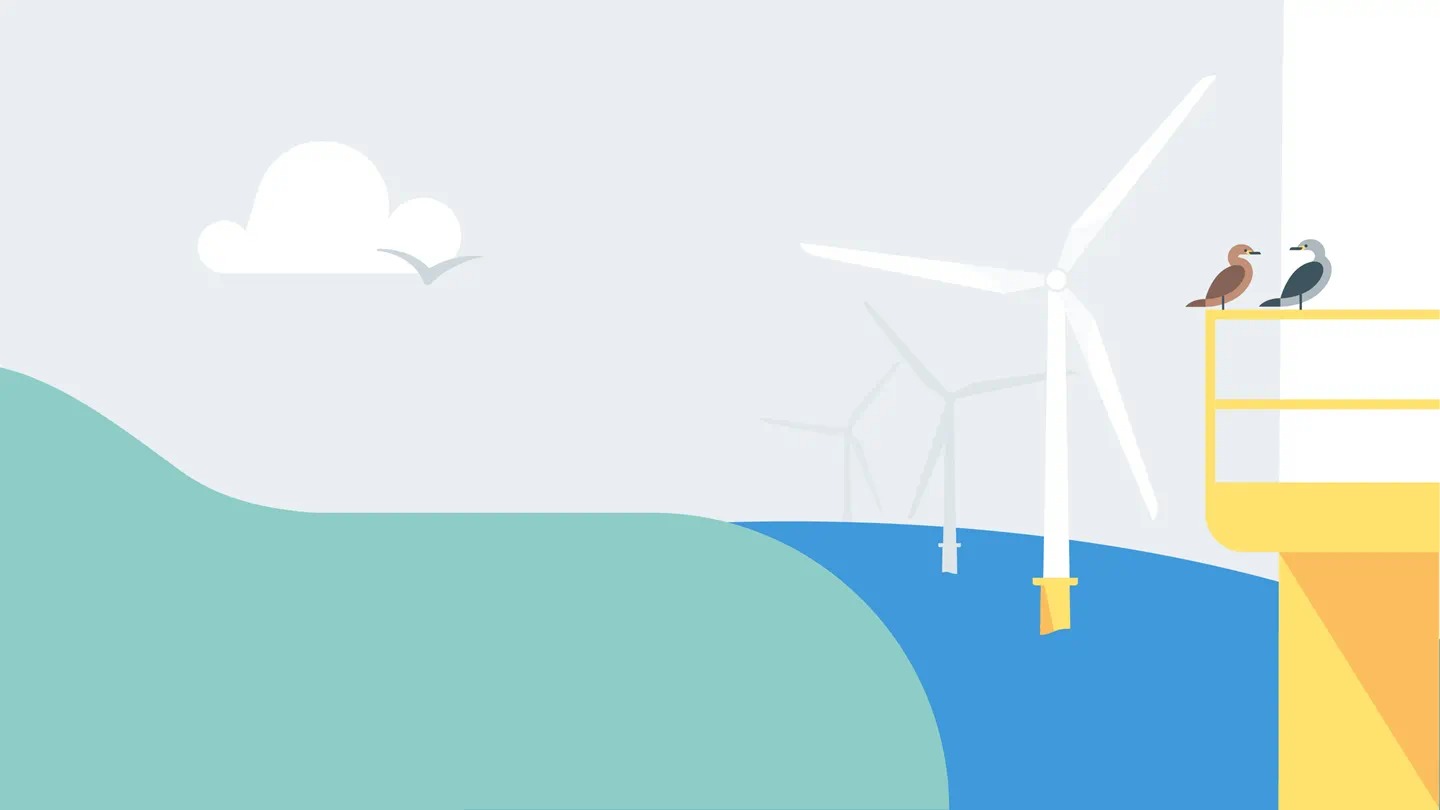Delivering innovative, scalable solutions
At Ørsted, we want to make sure the green energy transition happens the right way – in harmony with people and the planet.
That can be challenging and requires working collaboratively with partners to develop innovative, scalable, long-term solutions.
In the course of developing Hornsea 3, that led us to deliver a creative solution to help support kittiwake, a vulnerable seabird.

Ensuring green energy supports nature
Hornsea 3 will have a generating capacity of 2.9 GW – enough green energy to power more than 3 million UK homes. The wind farm, which will sit approximately 120 km off the Norfolk coast and 160 km off the Yorkshire coast, is one of the UK’s largest infrastructure projects.
Following its expected completion at the end of 2027, it will mark a huge step toward the UK’s green energy transition and goal of net-zero carbon emissions by 2050.
Given the magnitude of Hornsea 3, it is considered a nationally significant infrastructure project and we had to apply for a Development Consent Order from the UK government for permission to construct and maintain the offshore wind farm.
The UK government granted us permission to build Hornsea 3 in December 2020 with the requirement that we include special ecological measures to mitigate any potential impacts the development may have on nature and the local ecosystem.
Specifically, we were required to include ecological compensation measures for black-legged kittiwake (Rissa tridactyla), a gull species whose population could potentially be impacted by the wind farm.
Supporting a vulnerable seabird
Kittiwake are small, gentle, grey and white gulls that feed only on marine fish and small crustaceans. The gulls spend winters at sea, only returning to land to nest between March and September.
Kittiwake populations are declining in the UK. Researchers believe this to be a result of prey shortages and climate change. The species is listed as vulnerable and at risk of extinction on the UK’s Red List for Birds of Conservation Concern.
But while kittiwake populations have been declining in some areas, they have colonised areas of North East England and East Suffolk, demonstrating the coastline’s ecological suitability for the species.
To help support the local colonies and encourage new chicks to the population, we were required to construct artificial nesting structures for kittiwake on the coastlines of North East England and East Suffolk.

Ørsted has built three bespoke artificial nesting structures off the coastlines of Lowestoft’s South Beach and the RSPB Minsmere Nature Reserve as well as a nesting tower and four huts in Hartlepool.
Innovative artificial nesting structures
Individual birds are strongly attracted to areas where other kittiwake are already nesting, so locating artificial nesting structures close to existing colonies is essential to ensure they become occupied.
Ørsted conducted a thorough consultation on the ideal location for the artificial nesting structures with Natural England, the Royal Society for the Protection of Birds, and other experts to decide on where to site the structures.
So far, Ørsted has built three bespoke artificial nesting structures off the coastlines of Lowestoft’s South Beach and the RSPB Minsmere Nature Reserve. A further nesting tower and four fishermans huts have been constructed in Hartlepool.
Designed in collaboration with ornithologists, ecologists, architects, engineers, and local experts, the offshore structures sit about 1 km off the Suffolk coastline and have narrow ledges to mimic the cliff nesting sites. The onshore structures in Hartlepool present additional opportunities for monitoring the kittiwake
Each offshore octagonal structure can welcome 500 pairs of kittiwake, providing a safe place to nest away from towns and potential predators. Whereas the onshore site in Hartlepool can house 1,300 pairs. The pitched roof and overhang were specifically designed to mitigate avian predators.
They are fitted with sliding panels with one-way vision, designed so that researchers can observe the kittiwake onsite without disturbing them. The birds can also be remotely monitored via cameras.
The offshore structures are painted off-white to blend into the horizon, while the bases are yellow so mariners can safely navigate around them. The onshore structures have been designed to be inkeeping with the surrounding port environment and local fishermans huts.
Ready for long-term residents
We welcomed our first breeding pair and chick in Summer 2024, and have received reports of 4 pairs nesting on the structures in 2025. These are the first signs of success but we expect it to take a few years for a colony to form.
To encourage kittiwake to use them, 3D-printed ‘decoys’ made from recycled plastic have been placed on the nesting ledges.
Meantime, we’ll continue to share information about the birds and how they use these structures through the Seabird Monitoring Programme.
“This is a first of its kind project that required a great deal of collaborative work with stakeholders, architects, engineers, and ecologists to develop a bespoke solution,” said Eleni Antoniou, an Environmental Manager at Ørsted who worked extensively on the project. “We have already had our first kittiwake visitor to the structures and look forward to seeing our first long-term residents.”

